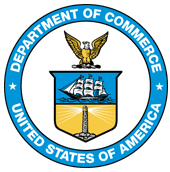Chapter 8. Monitoring Employee Performance
In an effective organization, assignments and projects are monitored continually. Monitoring well means consistently measuring performance and providing ongoing feedback to employees and work groups on their progress toward reaching their goals.
Progress Review
At a minimum, rating officials must conduct one formal progress review with each of their employees at approximately the midpoint of the appraisal period. Employees may also request (or supervisors may schedule) additional progress reviews. At the bureau’s discretion, additional progress reviews may be required.
Employee Responsibilities
Prior to the progress review meeting with his or her rating official, the employee is strongly encouraged to submit written documentation of his or her accomplishments since the last formal performance meeting with his or her rating official.
Discussion
At each progress review, the following occurs:
- A discussion about the employee's progress toward meeting elements included in his or her performance plan and how that progress is measured against the achievement of the organizational goals;
- The identification of any performance deficiencies and recommendations on how to improve;
- A review of the plan to determine the need for changes in the plan based on changes in responsibilities;
- A discussion of the developmental/training goals or objectives; and
- The rating official documents any changes to the original performance plan, signs and dates the revision, and provide a copy of the revised plan to the employee.
Both the supervisor and employee should date and initial the performance plan to indicate the progress review took place.
A progress review must also be initiated by the rating official if an employee's performance on one or more critical elements falls below Level 3. A Level 1 rating requires a written Performance Improvement Plan (PIP). While a Level 2 rating does not require a PIP, it is recommended that the rating official develop a written plan to assist the employee in improving performance to Level 3. In such a case, the rating official must discuss the instances of deficient performance and outline in writing what is required of the employee to bring his or her performance to Level 3. Rating officials should consult with their servicing human resources office to determine if this review should serve as the beginning of the formal opportunity period to improve performance required by 5 U.S.C. 4302(b)(6).
Employee Development
In an effective organization, employee developmental needs are evaluated and addressed. Developing in this instance means increasing the capacity to perform through training, giving assignments that introduce new skills or higher levels of responsibility, improving work processes, or other methods. Providing employees with training and developmental opportunities encourages good performance, strengthens job-related skills and competencies, and helps employees keep up with changes in the workplace, such as the introduction of new technology.
Carrying out the processes of performance management provides an excellent opportunity to identify developmental needs. During planning and monitoring of work, deficiencies in performance become evident and can be addressed. Areas for improving good performance also stand out, and action can be taken to help successful employees improve even further.

